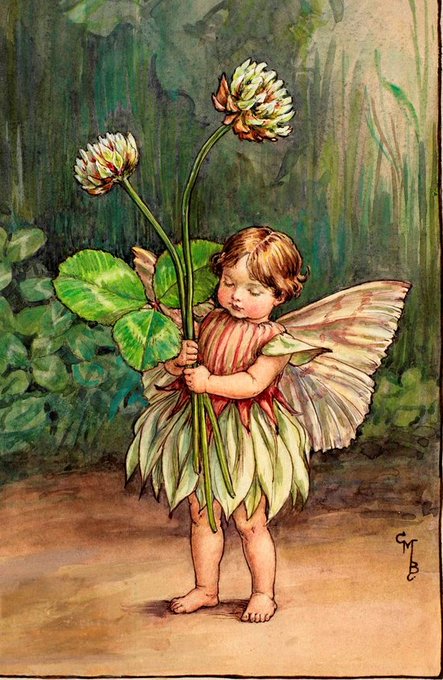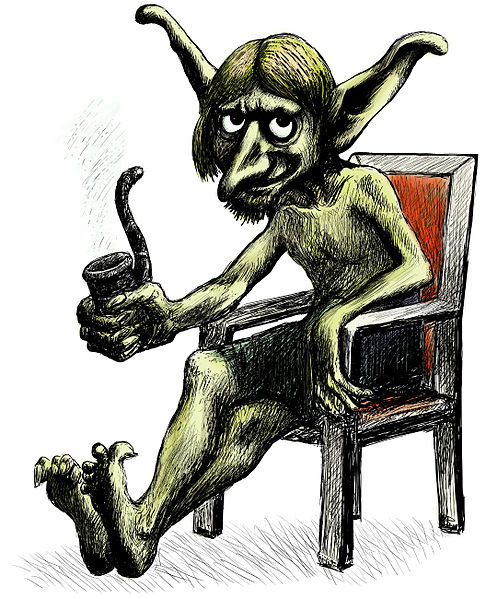FolkloreSundayのTwitterイラスト検索結果。 246 件中 11ページ目
✨🍀✨Clover lore...
Brings good luck if kept in the house, or worn in buttonholes or hats.
Protects against evil spells and enchantments.
If seen in dreams it foretells a happy and prosperous marriage.
Carrying a four-leafed clover allows you to see the Fae.
#FolkloreSunday
Peter Rabbit loses one shoe among the cabbages & the other amongst the potatoes & his escape from Mr McGregor is impeded by getting caught in a gooseberry net by his buttons. He loses his jacket while escaping a giant sieve & finally runs home in no clothes!! #FolkloreSunday
Beginning with the 15th century Europeans around the world began to revel in exotic clothes, bringing these into their own fashion to show their status as a worldly romantic traveler. Famous examples include the fez, the kimono, and animal skins from the Americas. #FolkloreSunday
Carretero y capatáz by Claudio Gay, 1854
Hats have acted as indicators of social status. In this #painting a foreman (with horse) wears a hat of greater height than the accompanying inquilino (19th-century Chilean labourer).
#FolkloreSunday
The perilous red shoes that won't stop dancing 👠
#FolkloreSunday
🎨Adrien Segur for H.C. Andersen's fairy tale.
To make images of the Greek gods be recognizable by everyone, even people who can't read, each god was given some distinctive piece of clothing or accessory - Athena, Hermes, and Ares each wear a particular helmet, Hera wears a crown, Apollo carries a lyre, etc. #FolkloreSunday
#FolkloreSunday
An old custom on May Day was to give a May basket. Children created the baskets, filling them with flowers they had picked, homemade trinkets and other goodies. On May Day morning the baskets were hung surreptitiously on the front door of their friends’ homes.
#FolkloreSunday
The May Queen, a young girl chosen and crowned in a traditional #MayDay festival. She rides or walks at the front of the parade, leading the celebrations. It is customary for her to wear a white gown symbolising purity, and a crown of flowers in her hair.
#May1
A 'hob-thross' lived in Millom Castle. He slept by the fire during the day, and worked all night, doing the chores the humans didn’t want to do. One harsh winter he was offered clothes, a terrible insult to a hob-thross, so he left.
#folkloresunday #Cumbria
art: Eric Edwards
Rhitta was a Welsh giant who loved to conquer kings and then weave their beards into his cloak. By the time he tried to take King Arthur's beard, Rhitta's cloak already had a hundred beards sewn into it. However, Arthur killed him and buried him under Mt Snowdon.
#FolkloreSunday
The tradition of "counting crows" as a divination tool began in 17th c. Europe.
"One for sorrow
Two for mirth
Three for a wedding
Four for a birth
Five for rich
Six for poor
Seven for a witch
I can tell you no more."
#FolkloreSunday #birds #witch
FAIRY ENCHANTMENT the fae cast an enchantment over woodland animals and birds; bird-riding fae are commonplace in folklore as seen in the fantastical world of French author and illustrator Jean-Baptiste Monge and his delightful #fairy transport #FolkloreSunday #GothicSpring
In Kerry, it’s said the fox and the duck had a competition
to see who was first to announce the day.
The sly fox stayed up all night & in the morning
the fox said ‘oh duck, duck …’
But the smart duck woke up & called out, ‘day! day!’
So the duck is first!
#FolkloreSunday
Renwick 1733: a Cockatrice took up residence in the ruined church, but John Tallantine killed the creature using rowan tree branch.
Some believe it can still be seen flying around the church at night.
#FolkloreSunday #Cumbria
In Irish mythology, Clíodhna, Queen of the Banshees & patron of Co Cork in #Ireland, has 3 brightly coloured #birds who eat apples from an otherworldly tree! Their song is said to heal the sick! ©? #FolkloreSunday 🦜🐦🦚🌳
#FolkloreSunday
In folklore & legend crows & ravens are often regarded as harbingers of doom, but they can also be the means of divination & prophecy bearing messages from the gods. The Celtic goddess Morrigan often appears in the form of a crow or raven.
🎨Jessica Galbreth
Hi everyone, hope you’re all having a great week so far!
The theme for this Sunday, 24th April, is BIRDS & OTHER FLYING CREATURES.
Get tweet-ready with #FolkloreSunday. Retweets after 10:30 am. See you then! Maude x
Image: The Owl at North Tor, by Jo March
"We must not look at goblin men,
We must not buy their fruits:
Who knows upon what soil they fed
Their hungry thirsty roots?"
"Come buy," call the goblins
Hobbling down the glen.
-Christina Rossetti, "Goblin Market"
🎨Arthur Rackham
#FolkloreSunday
18th century-It was apparently common for pirates to add gunpowder to rum. Blackbeard in particular, was said to drink gunpowder-laced rum before boarding enemy ships. It was said to be a form of Dutch courage, & enforced his reputation as a crazed foe.
#FolkloreSunday
@StephenGeoRae Also the title of a book by me.
Available on the Folklore Podcast website and elsewhere
#FolkloreSunday








































